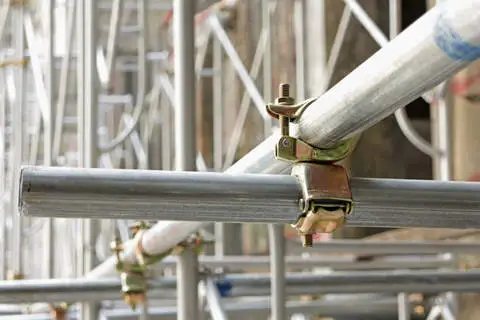Other

Building and Design standards cover everything from the foundation, to the structural skeleton, all the way through to indoor environment considerations and service-life calculations. With an eye toward efficiency in energy expenditure for climate control, building and design standards help reduce expenses while raising quality.
ISO 16814:2008
Building environment design - Indoor air quality - Methods of expressing the quality of indoor air for human occupancy
ISO 16814:2008 is intended to specify methods to express the quality of indoor air suitable for human occupancy, to allow several acceptable target levels of indoor air quality, depending on local requirements, constraints and expectations. ISO 16814:2008 applies to the design of new buildings and their systems and the retrofit of existing buildings and systems, indoor environments where the major concern is that of human occupants, buildings having any combination of mechanical and natural ventilation, commercial and institutional buildings. ISO 16814:2008 does not apply to residential buildings, industrial buildings and hospitals although those parts of such buildings that are similar to commercial buildings are covered. The requirements of ISO 16814:2008 might not achieve acceptable IAQ for all people in all buildings, due to one or more of the following sources of uncertainty. The outdoor air brought into the building can be unacceptable or might not be adequately cleaned. Indoor air has a wide diversity of sources and contaminants. There are many factors that affect occupant perception and acceptance of IAQ, such as air temperature, humidity, noise, odours, lighting and psychological stress. There is a range of susceptibility and preference in the population.
ISO 16817:2017
Building environment design - Indoor environment - Design process for the visual environment
ISO 16817:2017 provides an integrated design process for high-quality indoor visual environment including architectural and engineering aspects of daylighting and lighting systems for user satisfaction, health, well-being and productivity as well as the energy performance and sustainability of buildings.
ISO/TR 11219:2012
Information and documentation - Qualitative conditions and basic statistics for library buildings - Space, function and design
ISO/TR 11219:2012 specifies data for the planning of library buildings. It also provides guidance on the selection of technical building equipment for the different functional areas of libraries. ISO/TR 11219:2012 is applicable to all types of libraries in all countries, but especially to academic and public libraries.
ISO 7240-14:2013
Fire detection and alarm systems - Part 14: Design, installation, commissioning and service of fire detection and fire alarm systems in and around buildings
ISO 7240-14:2013 specifies the design, installation, commissioning, and service requirements for a fire detection and alarm system (FDAS), which is primarily intended to provide early detection of fire and notification within one or more specified indoor or outdoor areas for the protection of lives. The FDAS includes automatic detection of a fire and manual initiation of a fire alarm, with audible and visual warning to people within the detection area. ISO 7240-14:2013 also specifies requirements for FDAS capable of providing signals to audible warning systems in accordance with ISO 7240-19, to initiate the operation of ancillary technical services, such as fixed fire extinguishing systems, and to other precautions and actions. The protection of property is outside the scope of ISO 7240-14:2013. However, the requirements specified herein may be used as recommendations for property protection.
ISO 19208:2016
Framework for specifying performance in buildings
ISO 19208:2016 provides the framework for specifying the performance of a building as a whole or a part thereof in order to satisfy specified user requirements and societal expectations. ISO 19208:2016 covers buildings as constructed and inbuilt fixed components. It does not cover a) the use of the land for buildings, b) the design and operation of the environment within which buildings are located, and c) moveable contents within buildings. NOTE 1 Guidance on the application of certain clauses is provided in Annex A. NOTE 2 A part of a building includes subsystems, spaces, elements, assemblies, components, products and materials.
